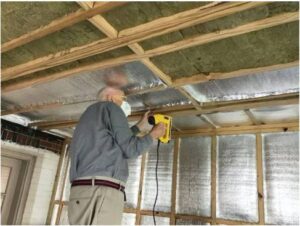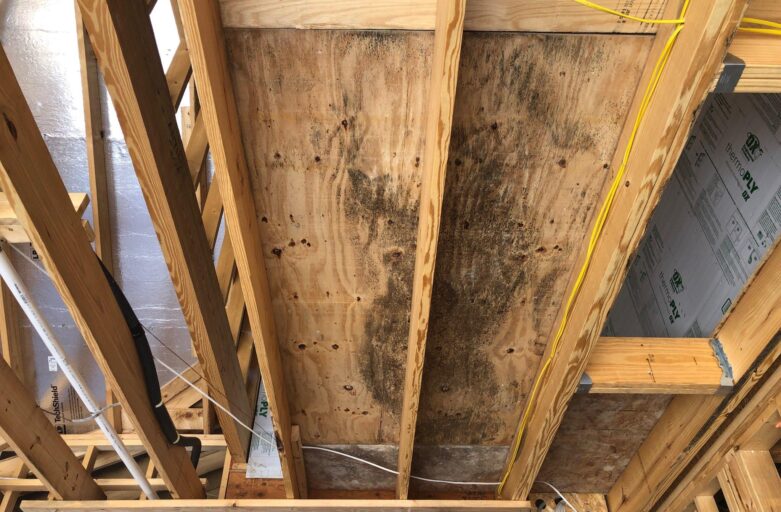Many homeowners choose Windows North Attleboro MA replacement to increase their home’s energy efficiency. Older windows allow ice, water, and air to enter the home, causing rotting, mildew, and high energy bills. There are two methods of replacing existing windows: insert and full-frame. Insert windows are installed within the existing frame, while full-frame replacements remove and replace the interior and exterior trim.

Paint can chip or peel when it loses its adhesion with the underlying surface. Moisture typically triggers this, whether it’s condensation on the interior or rain and snow on the exterior. Paint chips and peels aren’t just unsightly; they can actually be hazardous to people walking by. If the paint is flaking, it may have exposed bare surfaces that could be abrasive or scratchy and can also contain lead. To be safe, always test for the presence of lead before scraping or sanding. If the paint is old enough, you should also follow EPA guidelines for working with chemical strippers or heat guns to ensure your safety.
Unless you’re looking for a shabby chic look, it’s important to repair peeling or chipped paint right away. If left unchecked, this can cause further damage to your home. It can also make the window sill or frame rot and lead to water leaks.
Removing peeling or chipped paint can be a DIY project, but it’s often better to leave it to the professionals, especially if you suspect the problem is caused by a larger issue like moisture. A professional can strip the surface and sand it down to prepare it for new paint, while also making sure any rotting wood is repaired.
Caulking is a sealant used to fill in gaps. It’s commonly found around bathtubs and crown molding, as well as between your window frame and wall. If the caulking begins to wear down, this can let in water and allow mold and mildew to grow. This can be a common source of draftiness and should be re-caulked on a regular basis, usually at the end of summer or before cold weather arrives.
Window casing is the outer layer of wood that protects your window panes. It can be real or faux, but either way it’s a part of your window that contributes to the overall appearance and curb appeal of your home. Casing can be damaged by moisture, causing it to crack, rot, or even fall off. Replacing or repairing it is a relatively simple carpentry project and can be done without replacing your windows.
Water Damage
If your windows aren’t sealed properly, water can seep into the frame and cause serious damage to the rest of your home. Moisture can wreak havoc on walls, floors, and other construction materials in the house, leaving behind unsightly water spots or even collapsing wall structures over time. Luckily, water damage from window leaks can often be easily repaired. Inspect the walls around your windows to check for signs of moisture damage, like discoloration or paint bubbles/peeling.
Wooden window frames are especially susceptible to water damage, and a telltale sign is when the wood starts to rot. The rotting process is accelerated by moisture, leading to a dark brown or black color and soft or spongy feel. If you see this, it’s probably time to re-seal your windows or, in severe cases, replace them.
In addition to a cracked frame, you might also notice that your windows aren’t shutting easily or properly. This can be caused by a number of things, including the weather, old caulking, or improper flashing. If the weather is cold, it’s especially important to check that your windows are properly insulated.
A poorly insulated window will lead to energy loss and may also be a cause of leaks. A professional window replacement company can assess your insulation and make any necessary repairs.
Lastly, it’s important to inspect the muntins or mullions of your windows for any chips or flaking. These small pieces of wood are decorative or functional, and they sit in between panes to create a cross-like pattern. If they’re chipped or peeling, it’s likely that they need to be replaced, and this can easily be done during a window replacement.
It’s also important to check for any other signs of moisture damage, like gaps developing between floorboards or warped drywall. Moisture can cause serious structural issues in your home if it’s allowed to spread too far, and it’s best to catch any problems early with regular inspections and maintenance. If you’re seeing any of the above signs, contact Denver window services for an immediate repair or replacement.
Cracked or Broken Glass
Cracked or broken glass is a very serious window problem that should be addressed immediately. It allows draughts to enter the property, which is not good for your energy bills, and it also compromises the integrity of the window, meaning that it may not be as effective at keeping heat inside in winter and outside in summer. It can also be a security risk as it allows intruders or wild animals into the home and can be hazardous to anyone who touches it as tiny slivers of glass can become embedded in your skin.
There are two different routes you can take for a cracked window fix: a temporary one that takes care of the immediate problem, or a long-term repair option that will result in better results. The former involves using a heavy-hold tape that will keep the crack from worsening until you can get the problem repaired professionally. One strip of masking tape on each side should be sufficient for superficial cracks such as stress cracks that occur when the temperature changes dramatically. Deeper cracks will require a sturdier solution such as epoxy that can be mixed and applied with a putty knife.
You will need to clean the crack thoroughly first before applying the spackle to ensure that you have a smooth surface and that it is free of dirt or dust. Then apply the spackle over the crack, ensuring that it is fully covered and then leave it to dry. Use sandpaper to smooth the spackle once it has dried to make sure that it is level with the rest of the window.
Another way to cover up a crack is to use epoxy resin, which can be bought at most hardware stores and is relatively easy to apply with a putty knife. It will also require a thorough cleaning of the crack to remove any dirt or debris, and you should let it dry completely before using sandpaper to smooth it down and then again to ensure that it is level with the rest of the glass. This option will provide a more durable repair and will result in the crack looking as though it never existed.
Leaky Seals
Window seals are a crucial part of your home’s insulating system. They keep outside air and argon gas from seeping through between glass panes, which helps your energy bills stay low and protects your furniture and other belongings from the elements. Unfortunately, like any other exterior component, window seals will eventually wear out and need repair or replacement.
The most obvious sign of failing window seals is moisture between the panes, which shows up as fog. This moisture isn’t just unsightly; it can lead to mold, wood rot, metal rust and other forms of damage to the window frame and surrounding walls.
Failing seals also let outside air leak into your home, which can create drafts or disrupt your home’s temperature balance. This will make your HVAC system work harder to maintain the proper temperature, which can lead to higher energy bills. In addition, failing window seals can reduce your home’s noise-blocking capabilities.
Ultimately, replacing the window and sealing it properly is the best way to fix a broken seal. However, this isn’t an easy do-it-yourself (DIY) project; a single mistake could result in further damage and leave your window unprotected. If you’re concerned about the condition of your window seals, it’s worth contacting a Wixom windows replacement company for professional help.
Window manufacturers usually provide care instructions for their products, which is something homeowners should read. These guidelines can be a good starting point for understanding how to extend the lifespan of your window seals and keep them functioning optimally.
In many cases, a broken window seal can be repaired by adding caulking or weather stripping around the edges of the frame. However, if the problem is more serious, the only solution may be to replace your window or insulated glass unit (IGU) entirely. Typically, only professionals can perform this type of window repair, as it requires removing the IGU from the frame and dismantling the window assembly. This can be difficult and time-consuming, especially if your window has been in place for years. However, this is the only way to restore your home’s efficiency and protection to an acceptable level.

